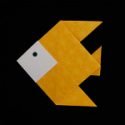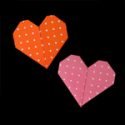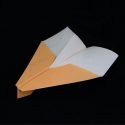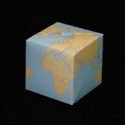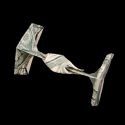Origami Classification
Rick Nordal and the Origami-List (a newsgroup of approximately 800 members) has generated a list of types of origami. In the future, we hope to organize the list so that we can have a better understanding of how the art form is evolving.
- Traditional origami
- Simple origami models – 2 and 3 dimensional
- Complex origami models – 2 and 3 dimensional
- Technical origami
- Origami creativity
- Abstract origami
- Digital origami
- Fun origami
- Action origami models. ie. jumping frog – paper airplanes
- Origami models that make a sound
- Origami games
- Origami puzzles
- Origami stories
- Origami that uses square sheets of paper
- Origami that uses rectangular sheets of paper – $ Origami
- Using a round sheet of paper.
- Origami using specially shaped paper
- Tear-I-Gami — The tearing of “perforated sheets” of paper
from each page of an origami book - Single sheet origami
- Modular origami – where multiples of identical modules are pieced together
- Origami quilt
- Golden venture origami
- Composite origami where a model is made from two or more different pieces each folded in different ways
- Multimodular origami
- Commercial origami
- Non – comercial origami
- Origami for Friendship: Show others how to make origami at get togethers and parties to jump start conversations and to build relationships.
- Origami for Education
- Origami for science ( space ) and mathematics – ie. engineering, industrial design, computational (consumer goods)
- Origami for Everyday Use – boxes, shelves, vases, cards
- Origami for Health:Many therapists use paperfolding in their fields of medicine.
Physical therapist use origami as a fun way to exercise hand muscles that they are trying to rehabilitate. ie. arthritis - Origami for Politics: the use of origami (in particular, the peace crane) to send a political message.
- Fashion origami
- fabric orgami – stiffened and not stiffened
- Towel origami
- Napkin folding. i.e. individual napkins
- Pleated napkin folding of the Renaissance which was used for elaborate table-centre decorations
- Handkerchief folding
- Lace doileys
- Food Origami. ie.This ranges from folding eastern European
Blintzes and Blineys (which gave the name to the “blintz” fold) to folding pancakes, cold meats and icing sugar - Plastic origami
- Metal origami
- Straws (the plastic varity or paper)
- Wheat straw
- Palm weaving
- Strip or ribbon folding
- Swedish Stars
- Paper Weaving
- money folding… various currencies of the world.
- Business card origami
- Sticky Note origami
- Japanese religious folding
- Japanese formal wrappers
- Tsutsumi
- Japanese Noshi
- Japanese gomashio wrappers
- Sembazuru Origami
- Jewelry origami
- Anesama ningyo ( ” big sister doll ” ) – Japanese folk dolls that re made from simple materials, often paper, and unique to particular areas of the country
- Origami Sculpture – Eric Joisel
- Origami tessellation
- Crease pattern origami
- Wet folding: folding paper while it is wet.
- Grafting, Tiling, Circle Packing and Tree Theory – Analysed and by Robert Lang
- Box-pleating – Kosho Uchiyama
- Blintzed bases – introduced as early as the 1950’s and early 1960’s
- Paper crumpling – Vincent Floderer
- Pleated surface textures – Eric Joisel, Jean-Claude Correia
- Origami paper involving curves
- The folding of curved creases
- The folding of curved surfaces
- Multi-piece tessellations – ie. Mick Guy, M.C. Escher
- ‘Multipiece origami”, in which differently folded pieces are built together to form (say) a building or a scene. Yoshihide and Momotani are well-known exponents of this style of paper folding.
- Multiunit boxes. ie. Tomoko Fuse
- Linked Tetrahedra. ie. Tom Hull
- Kirigami
- Origamic Architecture ( also calleld paper architecture
- Tea-bag folding
- Shibori: originally, shibori refered to the shaped resist dyeing of fabric. For example, fabric is tightly bound with strings and selectively dipped in dye. See video here. The term is sometimes used to refer to the selective dyeing of polygon-folded paper as shown here
- Kokigami
- Pornogami
- Yoshihide
- Sumiko Momotani
- Origami profiles – John Smith
- Speed folding origami
-
Books with Easy Origami
- Easy Origami: over 30 simple projects by John Montroll
- Origami Fun Kit for Beginners by John Montroll
- My First Origami Kit by Joel Stern
- Easy Origami: A Step-by-Step Guide for Kids by C Alexander & M Meinking
- Fun With Easy Origami (Dover Origami Papercraft)
- Origami: A Step-by-Step Introduction to the Art of Paper Folding by T Cook & S Henry
- Easy Origami For Kids Book Traditional Japanese Folding Papers Overs 20 Projects by J Wish
- Easy Origami for Kids: Over 40 Simple Origami Projects by O Brooks
Please Help
Please help by reporting broken links so that we can fix them. One easy message from you can save us hours and hours of clicking. Thanks!
-
More Origami Diagrams and Instructions…
-
These free origami instructions are made available to you by the paper folding community at large. If you have a diagram you would like to share, or if your diagram is listed here and you wish to have it removed, please Contact Us. Diagrams are intended for personal use. Copyright of the models lie with the origami creators and designers. Please contact the designer and/or creator directly for non-private usage of a model and/or artwork.









